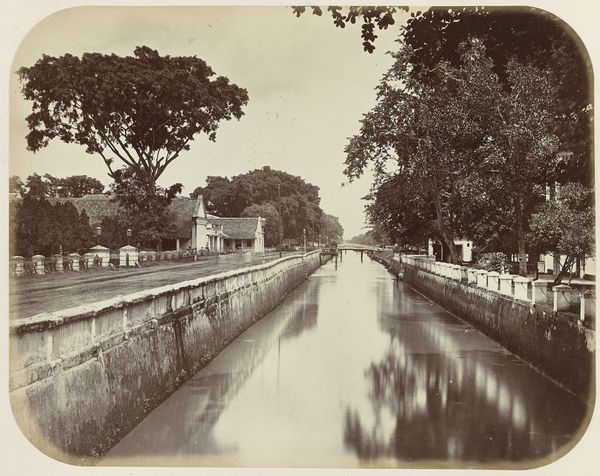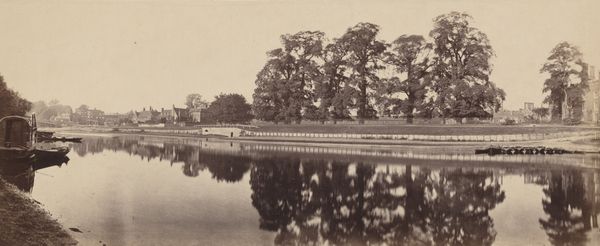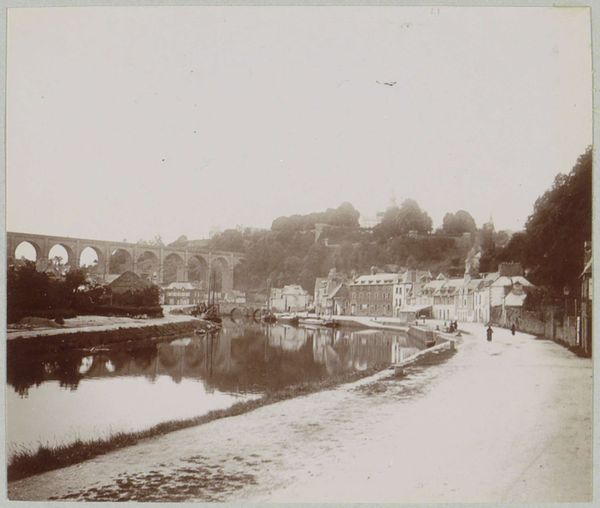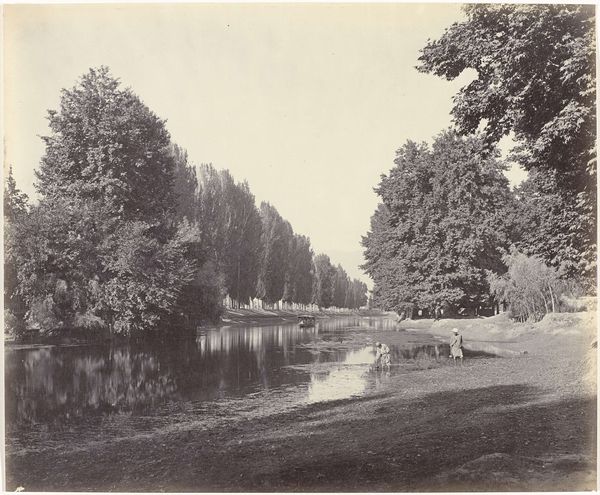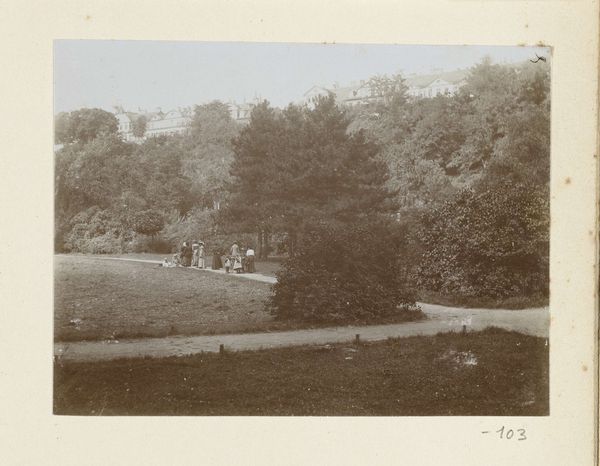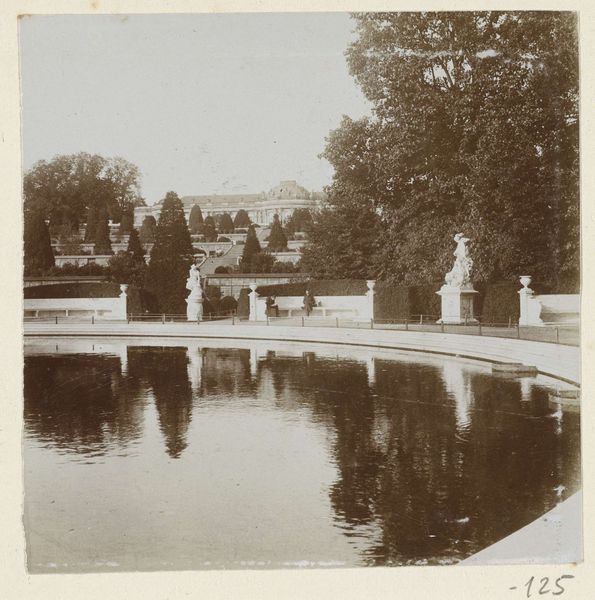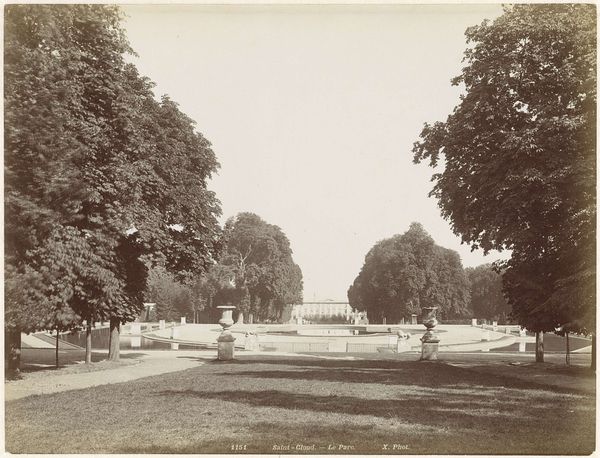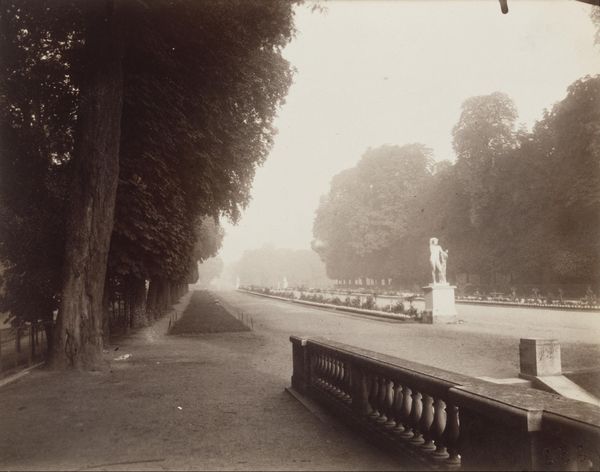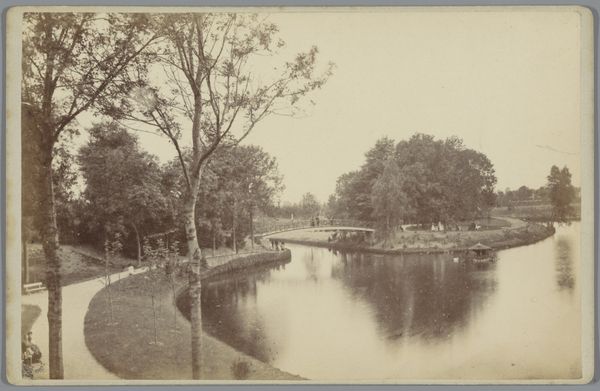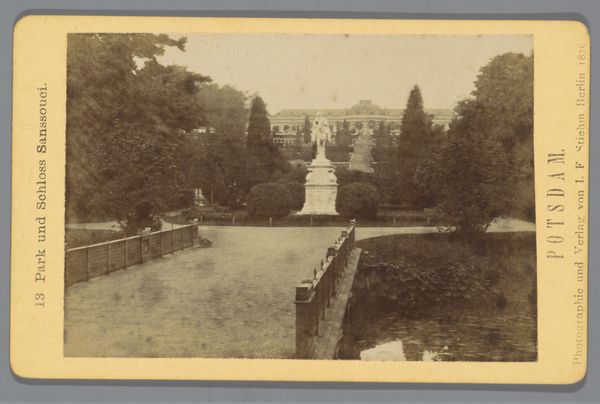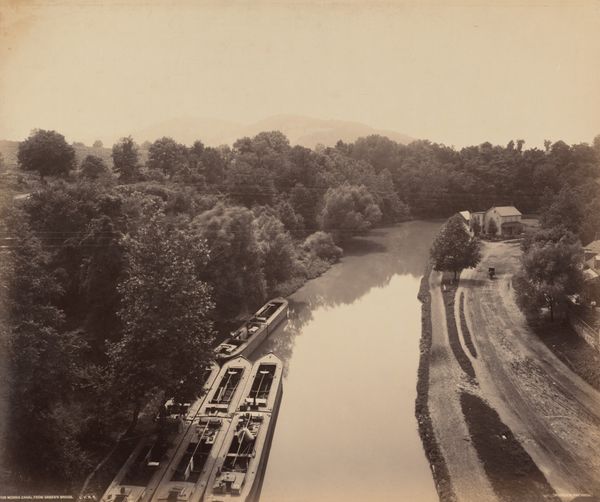
Dimensions: height 214 mm, width 275 mm, height 342 mm, width 459 mm
Copyright: Rijks Museum: Open Domain
Curator: A gelatin-silver print from around 1866 to 1877, this is Louis Huguet's "Les Jardins de la Fontaine te Nîmes". My initial response is drawn to the architectural rigor depicted; it seems like a carefully balanced composition. What do you make of it? Editor: The print's sepia tone lends a nostalgic feel, doesn't it? The image appears to idealize the public sphere through the architecture featured; it feels staged, regulated, and designed for the consumption of a specific bourgeois class, hiding behind the park. Curator: Exactly. Huguet, working in the mid-19th century, would have been influenced by prevailing aesthetic values and cultural expectations about representation, in particular, the role of women. How do we contextualize this image in the development of urban parks? Were they genuinely egalitarian spaces? Editor: It's fascinating how Huguet uses geometric elements: the bridge, the reflecting pools, the receding stairs. All create a clear order. I sense a tension between nature—those trees—and the firm man-made order that constrains it, though. Are we supposed to see civilization controlling nature? Curator: Certainly a controlling and controlling depiction that reinforces the prevailing social hierarchies of the era. But what’s interesting to me is the lack of diversity in Huguet's park; the scene looks populated by what seems like only white bourgeois individuals, which tells us so much about class divisions. In that period, who do you imagine truly had access to these gardens? Editor: This makes me look at the lone figures depicted: reduced, small. It forces the question as to what kind of individual exists successfully inside the carefully structured compositions present here. The romantic undertones clash for me because of that sense of structural domination of nature. It hints to something about an emergent cultural need to have control. Curator: Looking closely, one begins to read Huguet’s photograph as an emblem of its time: an age of contradictions—social progress and inequality. Its rigid composition aestheticizing exclusion in gardens made to present a mirage. Editor: Perhaps looking at this way, that tension between order and wildness reflects some underlying issue during the dawn of industrialization. Curator: A perspective that encourages deeper investigations beyond its superficial representation.
Comments
No comments
Be the first to comment and join the conversation on the ultimate creative platform.
